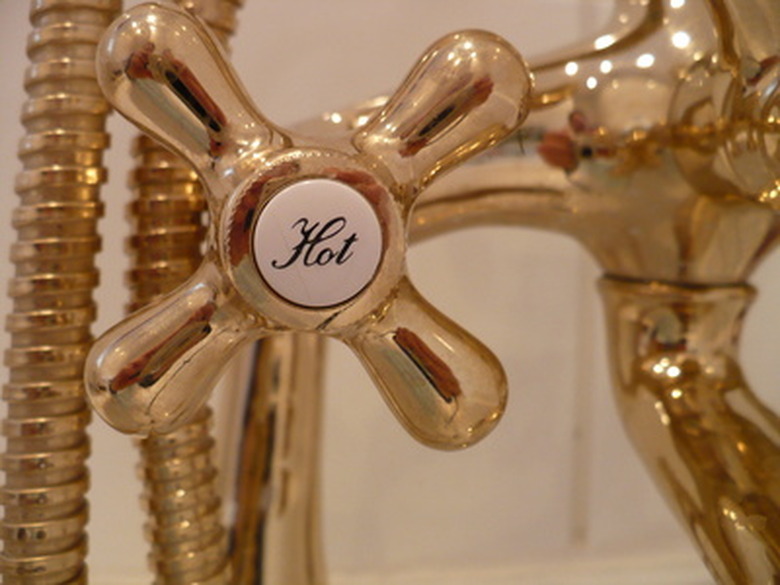What Are The Causes Of No Hot Water From Oil-Fueled Boilers?
We may receive a commission on purchases made from links.
Oil-fueled boilers and heating systems are popular in areas where there isn't ready access to natural gas. They also allow the homeowner to use renewable fuels; some companies are even offering mixes of heating oil and biodiesel, which is derived from biological matter and isn't technically a fossil fuel, although it produces as much atmospheric pollution. Whether the fuel is oil, biodiesel or a mixture, systems have their share of quirks and issues, and if you know how to diagnosis some issues yourself you won't have to call in the professionals when a simple solution can get you in that hot shower faster.
Tip
Your oil-fueled boiler may be failing to produce heat because of a thermostat malfunction, a loss of power or low fuel. You may be able to restore heat by resetting the system.
Know How the Thermostat Works
Know How the Thermostat Works
If you have a combi or tankless boiler that doubles as a water heater, the thermostat will control only the heating function, and it will turn it on only if the setting is above the ambient temperature of the room. Make sure your thermostat is set at least five degrees higher than the room's actual temperature, then check to see if the heat switches on. Doing this establishes the fact that your boiler and burner is working to make heat. Your hot water issue may be elsewhere.
Check the Temperature of the Boiler
Check the Temperature of the Boiler
One reason why the burner may not run is that the temperature of the boiler setpoint is already met. If the boiler is at it's temperature which is set by the technician, then the burner has no need to run. If you are still having hot water issues and the thermometer- (usually on front of boiler) is in the range of 160 to 200 degrees than your issue is with the combi or tankless system. Some problems could be a bad mixing valve or coil. This is the time to call in the professionals.
Make Sure the Power is On
Make Sure the Power is On
Make certain that all the power switches on the oil burner are set to "on." Also check the heating circuit fuses and the circuit breaker itself. These can be tripped if there's a surge to the electrical system, even if it has nothing to do with your boiler.
Check the Fuel Level
Check the Fuel Level
Check to be sure that your oil tank has enough fuel. If the oil tank gauge indicates less than 1/8 full or the mark is at the bottom of the gauge or not visible at all, it's likely that you've run out of fuel. For buried tanks without an indoor fuel gauge, you'll have to check the tank using a clean stick in order to measure the level of heating oil left in the tank.
You May Have to Reset the Motor
You May Have to Reset the Motor
Check that the reset switch for the electric motor hasn't been tripped. If the motor overheats this button pops out to indicate the tripping of an internal safety device, which then shuts off the motor. It's safe to restart the motor once it's cooled and you do this by pushing the reset switch. However if it trips again, don't keep running it as that may indicate damage to your system. Call in a professional.
How to Reset the Heating System
How to Reset the Heating System
If you've checked all of those causes and found nothing wrong you might try to reset the entire heating system. The reset button is red and needs to be pressed and held for about a count of three and then released. If there is electricity reaching the system, it will attempt to restart. If it turns on and runs smoothly, you should still put in a service call, but you can use the heater until someone arrives to look at it.
It is extremely important that you do not press the reset button more than once. Doing so could cause the combustion chamber to flood with unburned fuel, which is dangerous. Press it once, and if it doesn't reset, call a professional.
